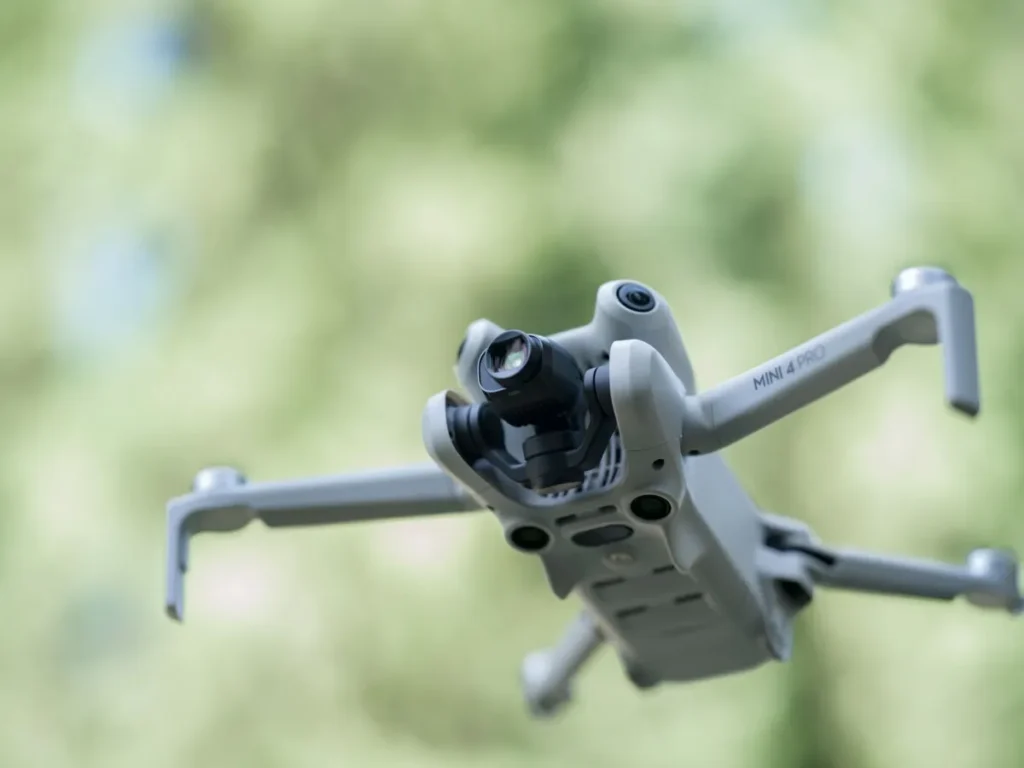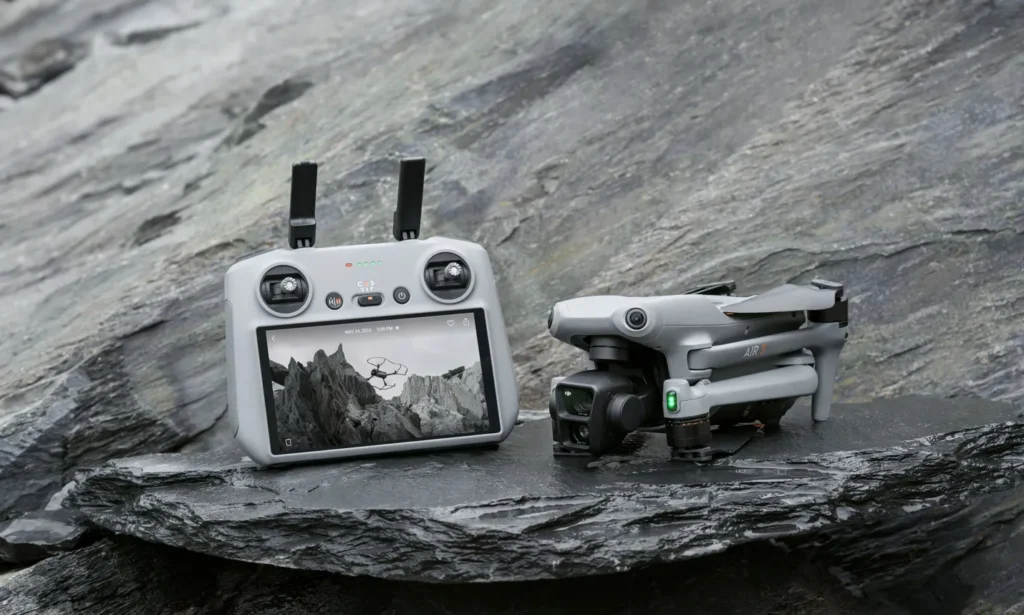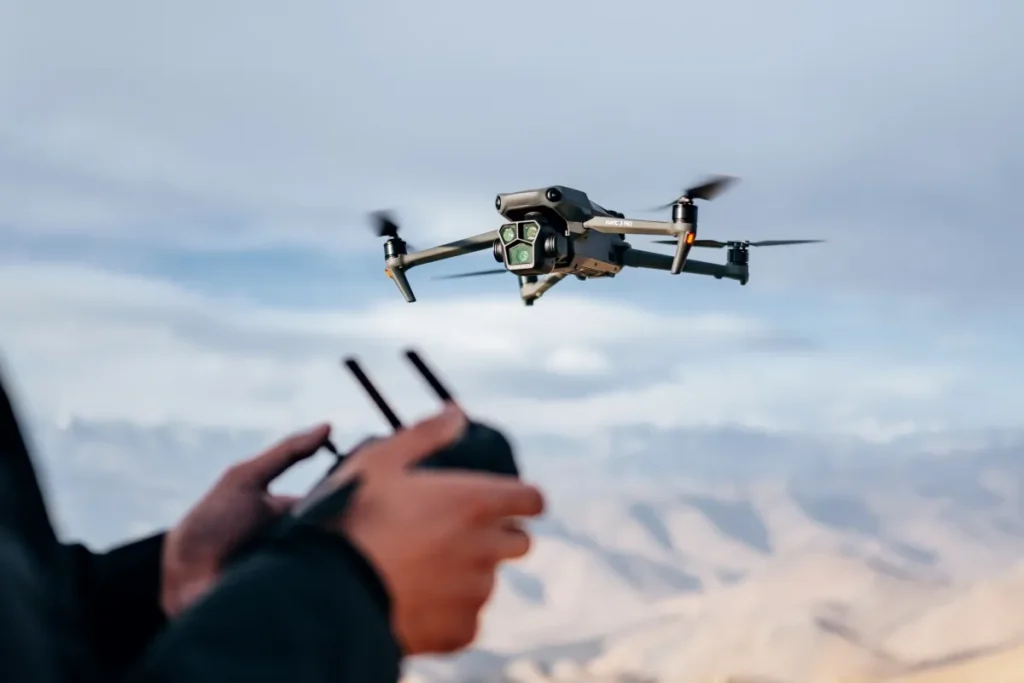
How to Use the “Follow Me” Auto-Tracking Mode on DJI Drones
The automatic tracking function integrated into DJI drones is particularly loved by enthusiasts. The well-known drone manufacturer has in fact made aerial photography easier to access for everyone, thanks to several automatic functions that simplify this activity. Drones such as the DJI Mini 4 Pro , the series Mavic 3 and the series Air They are designed to follow you automatically, allowing you to fully concentrate on your running, cycling or snowboarding without worrying about collisions.
Here's How Drones Automatically Follow Subjects
Early drones only used GPS transmitters in their controllers for tracking. These were not lacking in accuracy, but they lacked obstacle avoidance. Today's drones, however, use cameras and sensors to detect and track moving objects with vision recognition technology. This technology can process data quickly, tracking subjects without the need for external devices. However, recognition accuracy can be affected by environmental factors such as lighting conditions and the contrast between areas in direct light and shadow.
DJI, however, manages to combine GPS technologies and visual recognition functions to overcome the limitations of both systems.
DJI’s intelligent tracking tools, such as Spotlight, ActiveTrack, and Point of Interest (POI), are included in the FocusTrack suite. We’ll explain each mode in detail below, but overall, FocusTrack has made it easier to produce professional-quality videos, allowing you to focus on the creative aspects of filming while the drone handles the complex flight and tracking maneuvers.
The Best DJI Drones for Automatic Subject Tracking
Mini 4 Pro

Ideal for beginners, the DJI Mini 4 Pro is the first product in the Mini series with omnidirectional obstacle sensing technology. Featuring a compact and lightweight design, it is easy to carry and maneuver, even in tight spaces. The 4K/60fps camera takes high-quality photos and creates HDR videos with improved color calibration and contrast, while the maximum flight range of 20 kilometers allows for a remarkable variety of points of view.
DJI Air 3

The DJI Air 3 combines advanced features with intuitive controls, ensuring unparalleled Follow Me tracking capabilities with ActiveTrack technology. The dual main cameras, including a 1/1.3-inch CMOS with medium and wide-angle telephoto lenses, ensure consistent image quality on the one hand and the possibility of dynamic imaging on the other. With 10-bit D-Log M and 10-bit HLG color modes, it preserves more details in highlights and shadows, with a wider dynamic range. We recommend choosing the Fly More Combo, which includes the DJI RC 2 remote controller with a high-brightness screen, additional batteries, and a charging hub.
DJI Mavic 3 Pro

The Mavic 3 Pro stands out with its triple-camera system, which offers extraordinary creative freedom combined with advanced ActiveTrack capabilities, making it an ideal choice for the Follow Me function. The Hasselblad camera shoots 12-bit RAW photos with up to 12.8 stops of dynamic range, and easy focal length switching enables different compositional styles. The medium telephoto camera emphasizes subjects with a strong visual focus, while the updated telephoto camera shoots 4K video at 60fps and 12MP photos, with 7x optical zoom and up to 28x hybrid zoom. The Hasselblad and 70mm medium telephoto cameras are fully supported by ActiveTrack 5.0, ensuring stable tracking shots in multiple directions.
Follow Me Mode: The Basic Rules of Every Drone Pilot
When using Follow Me mode on drones, it is essential to maintain a flight altitude above surrounding obstacles. It is always best to fly in open spaces to avoid obstacles when possible, although many drones have automatic functions to avoid them.
Also, make sure your drone is operating in P-mode, as DJI’s ActiveTrack feature relies on both GPS and vision systems, which are only available in this mode. When you switch to S-mode, the vision systems are disabled, resulting in the drone’s positioning being limited to GPS only, and obstacle avoidance and intelligent flight modes are disabled.
Please note that if the vision systems are unavailable or disabled, if the GPS signal is weak, or if there is interference with the compass, the drone will switch to Attitude Mode (ATTI mode). It will then lose the ability to avoid obstacles, with all the potential flight hazards that this entails.
Finally, carefully (and constantly) monitor the battery status. Avoid using Follow Me modes when the battery is low and make sure you always have at least 30% battery when flying in ActiveTrack mode to ensure your operations are safe.
The app interface DJI Fly It has been designed to be simple and ultra-intuitive. Compatible with DJI Avata 2, DJI Mini 4 Pro, DJI Air 3, DJI Mavic 3 Pro, DJI Mini 2 SE, DJI Mini 3, DJI Mavic 3 Classic, DJI Avata, DJI Mini 3 Pro, DJI Mavic 3, DJI Mini SE, DJI Air 2S, DJI FPV, DJI Mini 2, Mavic Air 2, Mavic Mini.
How to Use FocusTrack on a DJI Drone
When using FocusTrack, you must first ensure that the drone is in an open and unobstructed environment. After takeoff, fly the drone at an appropriate height.
Entering FocusTrack
There are three ways to enter FocusTrack mode:
- Draw a box around your subject in the camera view as soon as the image stream appears in the app.
- Enable Subject Scan in the Control Settings and wave your arm towards the drone, as if waving.
- Finally, tap the green logo on the image transmission screen to fix the target.
Select tracking mode
Spotlight
In this mode, the camera remains locked on the subject while the pilot can freely maneuver the drone. It is not the drone that automatically follows the subject, but the installed camera that is always focused on it, and in this way it can perform even complex movements around a fixed or moving target.
- After locking on to the target, the drone defaults to Spotlight mode.
- Start shooting by tapping the shutter button on the app interface or pressing the shutter button on the back of the controller.
- Control the distance between the drone and the subject using the control joysticks.
- Adjust the composition angle with the gimbal dial and the yaw joystick on the controller.
ActiveTrack
ActiveTrack includes two modes: Trace and Parallel.
- Trace Mode: The drone follows the subject from behind or from a fixed angle, avoiding obstacles. It maintains a constant distance from the subject and is therefore ideal for tracking moving objects or people.
- Select Trace mode and tap “GO” to have the drone track the subject at a constant distance. The drone automatically calculates the distance to obstacles, plans the path and avoids them.
- Parallel Mode: In this mode, the drone flies alongside the subject, maintaining a constant angle and distance, providing a unique perspective as it moves parallel to the target.
- Tap “GO” and then the shutter button on the app interface, or press the shutter button on the controller to start shooting.
If the target is lost, the drone will remain in hover, that is, it will maintain a constant altitude and practically zero speed.
Points of Interest (POI)
In this mode, the drone orbits a specific target, keeping it in the center of the frame at all times. You can set the direction and speed of flight, and the drone will calculate the flight path to “circumnavigate” the subject, keeping the altitude and radius constant.
- Have the drone climb to a suitable height, then lock onto the target and select POI.
- Set the direction and flight speed: the drone will orbit the target, staying at the same altitude and constantly calculating the flight range.
- Then start shooting by tapping the shutter button in the app interface, or by pressing the shutter button on the controller.
Exit FocusTrack
To exit FocusTrack simply tap the “Stop” button on the flight interface, or press the flight pause button directly on the controller.
ActiveTrack/FocusTrack Troubleshooting Tips
When using ActiveTrack or FocusTrack and the target is not recognized or the drone suddenly stops tracking the subject, the reason for the problem could be inadequate or too bright ambient light and/or incorrect framing of the target. It can also happen that the drone gets confused when the target moves too fast or changes posture, or when a target of very similar appearance appears near the one already tracked.
To deal with these issues, make sure that the environment you are working in is sufficiently lit, perhaps choosing to fly outdoors and during the day. When tracking a vehicle, it would be best if it moved slowly and at a constant speed: if it travels too fast, the drone could lose the target. Similarly, when tracking a person, it is advisable to avoid drastic changes in position, such as somersaults, continuous changes from standing to crouching, and so on. Also check that there is not a very similar target around your subject: if the tracking target is a white car, when a second car of identical color and perhaps similar passes by, the drone could release its target and start following the new car, ruining your work and causing possible misunderstandings.

